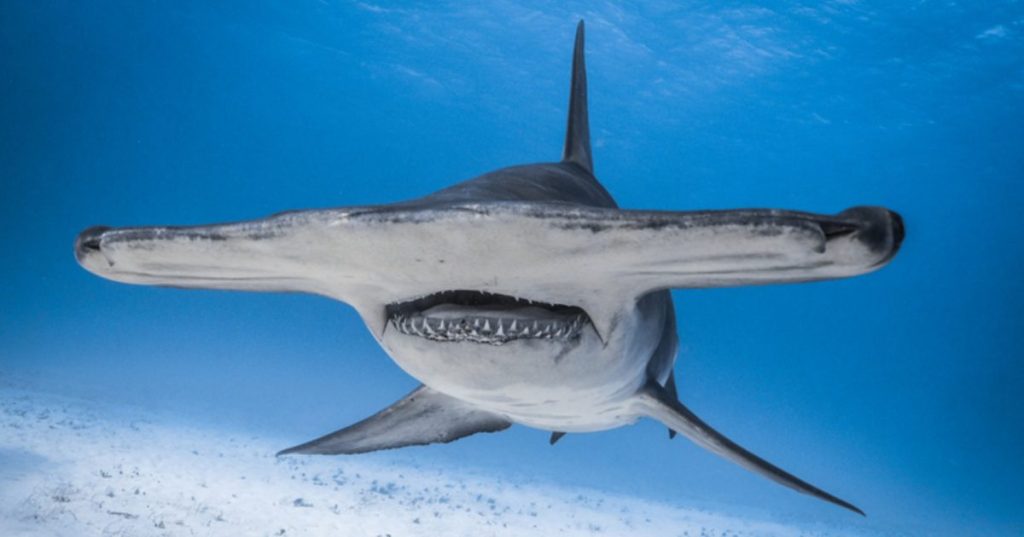Trending Now
If there’s one thing you can take away from pretty much every nature documentary, it’s that Mother Nature is a mad scientist. There are all kinds of weird things floating around out there, but listen – if you dive a little deeper, you’ll usually find out there is a method to her madness.
When it comes to sharks, why would one evolve to have a head like a hammer?
Buckle up, because you’re about to find out.

Image Credit: iStock
When it comes to evolutionary advantages, scientists think those weirdly shaped heads provide a few.
First, their wide-set eyes likely give the sharks a much wider field of vision. They’re able to have a better sense of their surroundings, even though their depth perception is likely lacking.
To make up for that, hammerhead sharks have unique sense organs called ampullae of Lorenzini. Scattered on the underside of their “hammer,” they actually detect electricity.
Similar to a metal detector, these pore-like organs help the sharks sense and locate prey that’s buried underneath the sand on the ocean floor – and they’re pretty darn accurate, too.
Also, the hammer shape of their heads allow them a sharper turn radius while swimming. Large surfaces tend to be more powerful in motion, so they’re able to switch directions rapidly in pursuit of prey.

Image Credit: iStock
It’s difficult for scientists to trace the evolution of modern day hammerhead sharks because almost all shark fossils are teeth and nothing more. Their bodies are made of cartilage, which breaks down more quickly than bone and rarely has a chance to turn into cartilage before it disappears.
That said, there are nine different types of hammerheads in existence today that vary in size and head shape. Many scientists long posited that the sharks have evolved larger hammers over time, which would mean the species with smaller hammerheads are older than their larger-headed counterparts.
When they extracted and studied DNA, however, they found that wasn’t the case at all – the older species had the larger hammerheads instead of the smaller.
So, instead of natural selection working in favor of bigger heads, scientists now think that the larger heads were a genetic defect that worked to the sharks’ advantage, and so those bigger-headed sharks survived to pass that trait down to their offspring.

Image Credit: Creative Commons
Meanwhile, natural selection is selecting for smaller hammerheads, as is seen in the DNA studies.
So while there are definite advantages, those sharks with the most pronounced hammers would have been considered deformed by their peers when they first appeared.
I guess there really is no way to guess what the future will hold, whether you’re a shark or a human or anything else Mother Nature decided to create.






